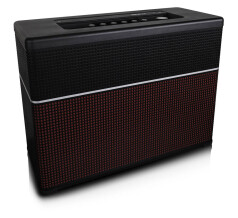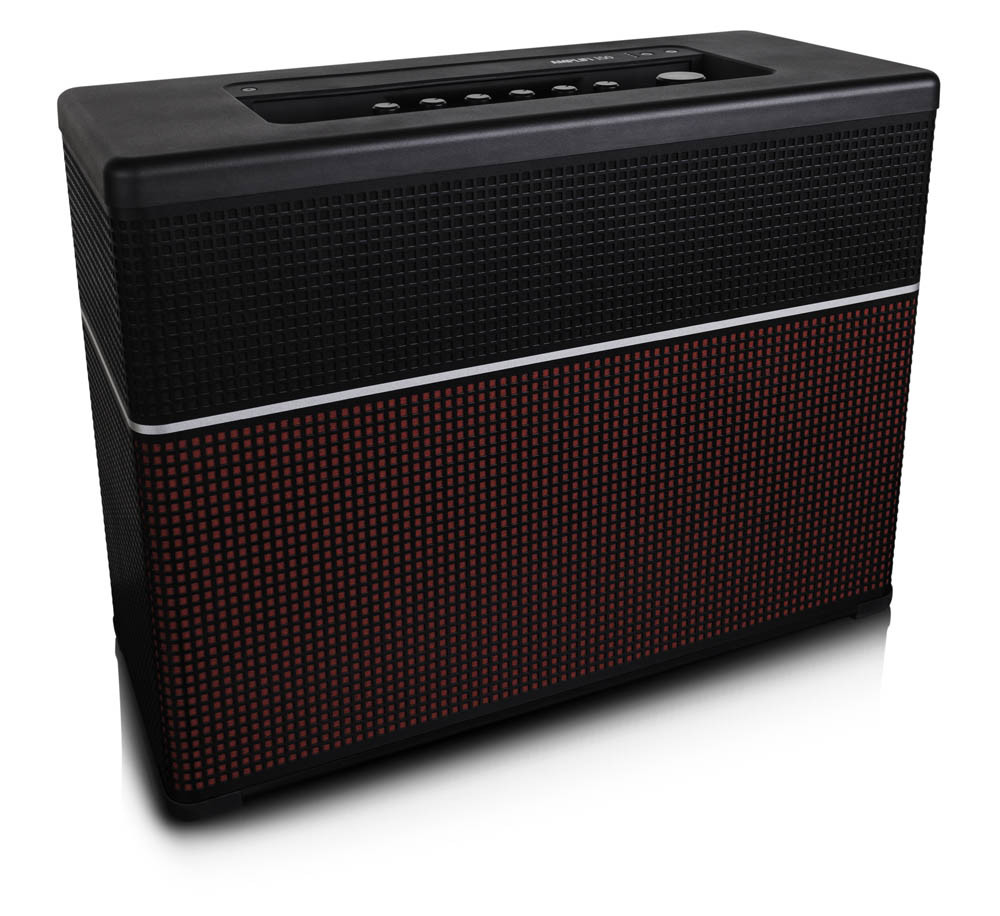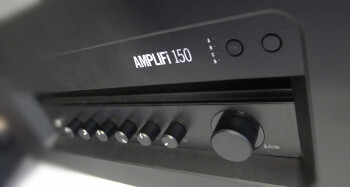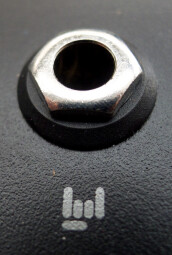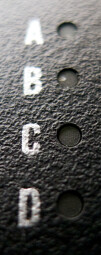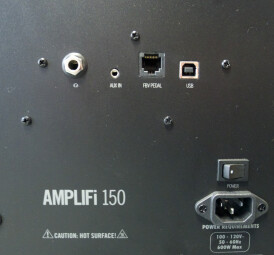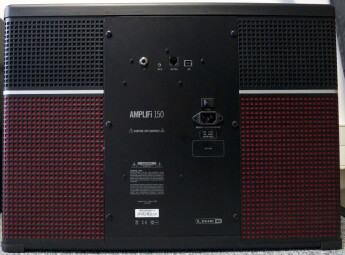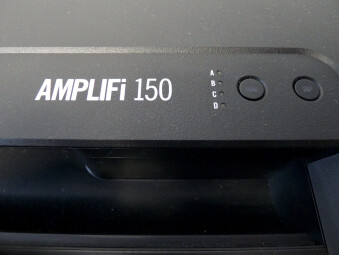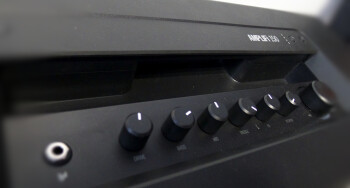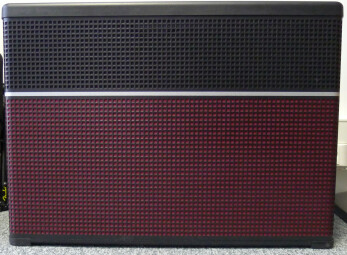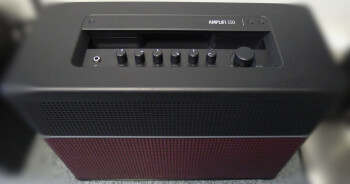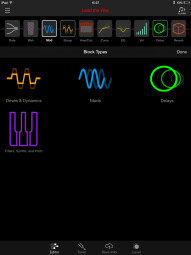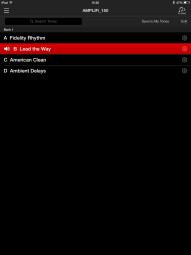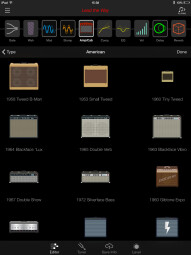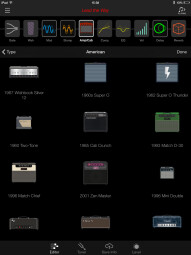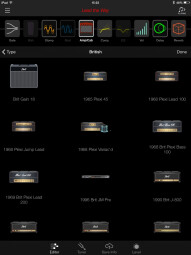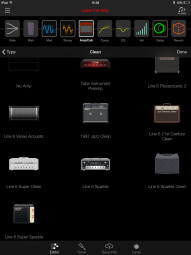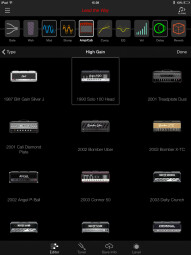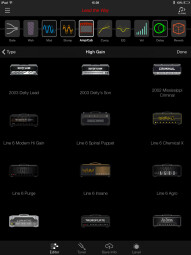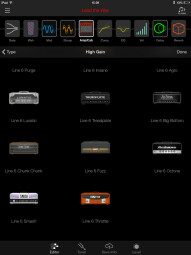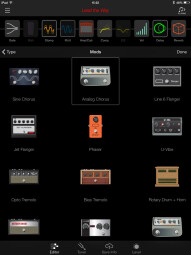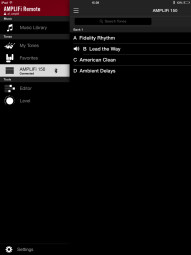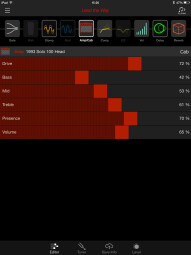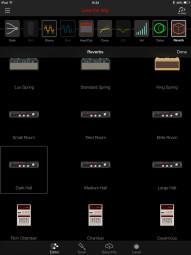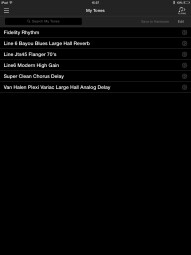Line 6 enters the Bluetooth era with the new AMPLIFI series, which combines multimedia speakers and a modeling combo in a single box.
It’s been quite a while since the very first POD came out ─ it was a pioneering product that sounded revolutionary at the time. Many brands have treaded the path opened and perfected by Line 6, and many products have been launched (combos, stacks, plugins, multieffects) that were inspired by the little red POD. To be honest, its last version, the POD HD500X, which we reviewed here, didn’t have any real new features and, despite its qualities, left us longing for more. Certain fans of the US brand started to get impatient and worry about it losing its leader and forerunner status to the benefit of more innovative brands. But they shouldn’t worry too much, Line 6 has struck back and introduced at last week’s NAMM its latest baby, the AMPLIFi 150 guitar modeling combo, which offers plenty for us to talk about.
PLASTIFi
At first sight, AMPLIFI has the classic combo rectangular look. We can hardly make out the speaker behind the red and black Tolex protected by an imposing plastic grill. And that’s normal, because it doesn’t have just one speaker, it has five: two mid-range and two tweeters arranged around a 12" Celestion custom speaker. Hmm…a sort of 2.1 system in a combo?
But does that mean that we can use it as a speaker system for our audio devices? Absolutely! And therein resides AMPLIFi’s first original feature (that’s where the spelling “mistake” comes from, AmpliFi…Hi-Fi…you know?): it can not only amplify your guitar, but also those lovely nights when you end up with vomit all over your place and the next day a friend is texting you demanding you to take back your calling his girlfriend “a fat lump” when you really meant to say that she is nice and funny, and even charming… in her own special way.
Some might say that other combos already offer the possibility to amplify other audio devices via an Aux in. While the AMPLIFi allows you to do that, with the corresponding input on the rear panel, we can also add that those combos don’t sport speakers especially designed for that purpose, nor do they feature a BLUETOOTH system compatible with Mac, PC and a plethora of devices running Android and iOS, like AMPLIFi does. It is way more fun without cables and we can compare our combo to a giant Jambox that we would be tempted to put on a shelf if its weight and size wouldn’t make us reconsider the idea (it’s not that big, but still…).. Unless you have scaffolds in your living room, you’'d better not tempt fate. We wish luck to all Jackass fans who nevertheless want to give it a try, considering that the combo doesn’t have a handle. It has a slightly recessed plastic bar at the top that might help you lift it up, but it is definitely not comfortable at all.
I would say it has a very plastic look to it, just like Pamela. The control panel and the knobs themselves (from left to right: DRIVE, for the distortion amount, BASS/MID/TREBLE equalizer, FX level, REVERB, and Master volume) seem pretty fragile. Its general aspect is a bit gloomy (unlike Pam’s), the top panel being much less crowded than on a traditional modeling amp.
The jack input is to the left of the knobs, while to their right and a bit higher are four LEDs (A, B, C, D) that represent a sound each. Right beside them are two buttons, TONE (to select one of the four presets) and TAP (which, as its name implies, serves to tap the tempo).
On the rear, from left to right, a headphones output, the stereo AUX IN mentioned before, an FBV pedal connector (sold separately, grrr) to control the presets with your feet, and a USB port (“for future use”, according to the user guide…mysterious…). Below we find the connector for the power cable and the POWER button to turn on the AMPLIFi… Which reminds us that the time has come to turn it on and see how it all works.
SIMPLIFi
Bluetooth is not only meant to send music to the speakers, it also allows us to control the AMPLIFi with our iDevice using a specially conceived app. Obviously, the amp can also be used as a standalone unit, but controlling it from a smartphone or tablet will make things a lot easier.
For example, when we press and hold the TAP button we access the tuner (which mutes the sound automatically). The tuner is represented by the LED ring around the big volume control. When we play a string, the LEDs on the left turn red if the note is too low or, if the note is too high, it’s the LEDs on the right that turn red. When the string is in tune, the center LEDs illuminate white. Very nice, very classic, but nothing new. Except that there is no indication of the note name, so you might want an E and get the string perfectly in tune, but one half step below. The app’s more precise and responsive TUNER works in the same way, but it does show the name of the note played.
By pressing and holding the TONE button when in standalone mode (the function is disabled when connected), you can modify and save the parameters of the presets stored on the amp, like the drive or reverb settings, for example, but you won’t be able to change the modeling nor the nature of the reverb. You get four sounds that you can fine-tune, but that’s it.
And finally, you can choose between the volume of the guitar on its own, or together with your favorite songs, by pressing the big master control (called BLEND). The level of the guitar is represented by white LEDs, while the mix of both signals is represented by red LEDs.
The standalone mode is very limited without third-party tools, so if you are not a geek or you are not the “connected” type (as marketing people say) you might as well go look for a solution somewhere else.
On the other hand, the AMPLIFI REMOTE iOS APP opens up plenty of possibilities, including the most essential one: create your own sound. To that end we have 10 effects blocks, which can be reordered at will. They include Noise Gate, Wah Wah, FX1, FX2, Amp/Speaker, Compression, 4-band EQ, Volume pedal, Delay, and Reverb. Unlike the POD HD, for example, everything is designed to be in series, no effect is in parallel. You can’t add effects blocks only move them before or after the amplification stage.
There are four types of effect blocks: DRIVES & DYNAMICS (distortions, compressions…), MODS (Chorus, Flangers…), DELAYS (digital, tape delay…), and FILTERS, SYNTHS & PITCH (filters, coffee and donuts). Once we’ve assembled a preset, we can save it on our device or directly on the amp, and even publish it to the Internet via the CLOUD to share it with the Line 6 users community.
And this is the moment where I start to complain (sorry, I’m French) because — as Cristiano Ronaldo famously said when he renegotiated his million-dollar contract with Real Madrid — “I’m sad.” There’s no empty preset for us to create our own sound from scratch. We are forced to start from the presets already available. It’s not that bad, since we can always save a TONE that we have emptied before, but it would’ve cost Line 6 nothing to offer the option right from the start.
And, since I’m not only French, but also from Paris, I’ll complain a second time: why — and it’s the same criticism I made when I first met the POD HD500X — if there are four sounds readily available aren’t they clean, crunch, rhythm, and lead (in that order)? Why mess it all up and include intrusive effects sometimes?
Fortunately there are many things to rejoice about. The app features an audio player with the possibility to make a playlist and play along with the songs. We can further slow down the tempo to half the speed or loop certain parts to assimilate them better. And in order to put us in the right mood, Line 6 offers the TONEMATCH technology that selects the best preset to match the song read by the player. If you really like one of the sounds you can place it in the FAVORITES folder.
On the iPad graciously lent to us by Line 6 we had a BETA version of the app installed, small crash included. But knowing the brand, it will surely be more stable when officially released. I also noted that when you change from AMPLIFi REMOTE to another app, the Bluetooth connection to the amp is lost. It reconnects automatically as soon as you relaunch the app.
When you change a parameter directly on the amp (which we do instinctively very often, despite having the iPad on the lap), the change will effectively take place but it will not be displayed on the app, so you can’t really know for sure how much you increased the DRIVE, for instance.
I also noticed another defect, one that will surely be fixed when the final version comes out: when listening to a song on it. the app’s player automatically stops when you switch to another app to read the lyrics or the tab, for example. For the time being, the solution is to play the song back with iTunes and keep Line 6's remote open (but you lose the benefit of being able to slow down the tempo or play loops).
Since you can play with MP3s, it’s a pity that the Californian engineers didn’t add a second jack input like on the POD HD (which is one of its best assets) to be able to play with a friend.
The interface is pleasant and the amp icons (divided in four categories: CLEAN, AMERICAN, BRITISH, HIGH GAIN) are easily identifiable. According to Line 6 there are more than 200 amps and effects. I counted 52 different amps (you can read the full list in the screenshots). Changing the order of the chain or changing tabs is done without a hitch, except when you change amps or effects. In that case you need to press a small icon, several times on some occasions, to get to the desired page. All things considered, it is way more practical and fun than connecting the amp to the computer or browsing parameters in a small LCD.
Finally, at the time of the review there were only four presets available, the ones on the amp, and no possibility to download any more. However, Line 6 confirmed to us that there will be several hundred more available when the amp is released. It is also important to note that AMPLIFI 150 will have its own type of presets to make the best use of the five speakers. So it won’t be backwards compatible with other products of the brand.
ELECTRIFi
To show you how the AMPLIFi 150 sounds, I used my Fender Telecaster Deluxe and a Gibson SG standard tuned down one whole tone. Since it doesn’t have one, but five speakers, Red Led, Los Teignos and myself opted for a ZOOM Q3 recorder placed a couple dozen inches from the amp, rather than an SM57 in front of one of the speakers.
To start with, here are two factory settings.

- 1 arpege 00:41
- 2 lustfor 00:09
We noticed that the sounds are oddly similar to the ones of the POD HD500X. Moreover, I found that the sound with headphones is more flattering than with the speakers, which is more aggressive (shrill?). I was very pleasantly surprised by the basic presets, especially by the LEAD (to which I’ll come later). They are very useful and easy to play.
If you don’t lean the amp towards yourself, the lows are very present, but you lose lots of mids and high mids. So you have to play facing the amp. Don’t fear for your ears, the amp’s volume is not excessive. Its 150W rating doesn’t correspond to the 150W of a tube amp. I’m not sure you could mask the drums even if cranked all the way up. So you either use it at home or you don’t use it at all. However, the music on your iPod will go up one level with an increased volume that ought to be more than enough.
Here are some quickly programmed and recorded sounds: a Van Halen-like example with a Marshall Plexi Variac, a metal riff with a Line 6 Modern High Gain head, a brief bossa with a Line 6 Super Clean tone, three arpeggiated chords with a clean sound + chorus with the Line 6 Sparkle, and finally a bluesy take with Line 6 Bayou + a Large Hall reverb that will allow us to appreciate the good dynamics of the modelings.

- 4 vanhalen 00:10
- 5 metal 00:17
- 6 bossa 00:17
- 7 clean chorus 00:30
- 8 blues dynamic 00:32
We tread on familiar ground with this new Line 6 product. Don’t expect anything new in terms of modeling. The amp’s emulations vary in quality, although generally speaking they are relatively faithful and satisfying. The effects are still very good (especially the stereo ones).
To finish, we tested the app’s player with a blues rock song playing along with a very '70s Flanger-based lead sound (Line 6 JTS-45). And since I regret not having played a solo on “The Maze, ” a long psychedelic song on Abrahma's latest album (the band where I play), here’s a short improvisation with the LEAD sound’s factory settings.

- bluesrock 00:36
- abrahma 01:23
Note: the Zoom Q3 doesn’t really do justice to the sound quality of the amp, which evokes a pumped-up version of Jawbone’s Jambox. At half volume it can easily fill a 260 sq ft room with sound. And since we have at our disposal a practical loop function to entertain ourselves, we can say that this hybrid concept turned out pretty well.
SALSIFi
In short, this AMPLIFi 150 has everything you expect from a “practice amp.” In that sense it will be most interesting to occasional and even seasoned guitar players, who want to practice under good conditions and with a little bit of everything (tuner, advanced audio player, prepared and automatically selected presets, etc.). Professional guitarists who play solo in small, intimate stages might also find it useful as a playback system without the need to carry around a second amp or a PA system. But it seems to me that the real targets of Line 6, which we salute for the originality of the concept, are the best “connected” among us, those who get along better with technological innovations, namely the youngsters. Even if the slightly inflated price of the combo ($499 without FBV pedal, grrr) might scare them off, they can always resort to the smaller AMPLIFi 75, slightly less powerful but also less expensive ($399, to the great relief of mommy and daddy). It will please beginners who love simplicity but also, and specially, students who don’t have enough space in their rooms to fit an amp and an audio system but nevertheless would like to party into the morning with some music.


